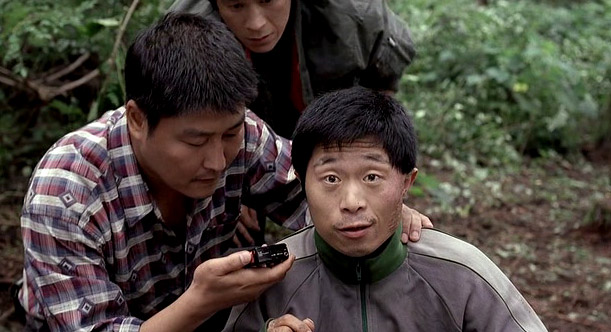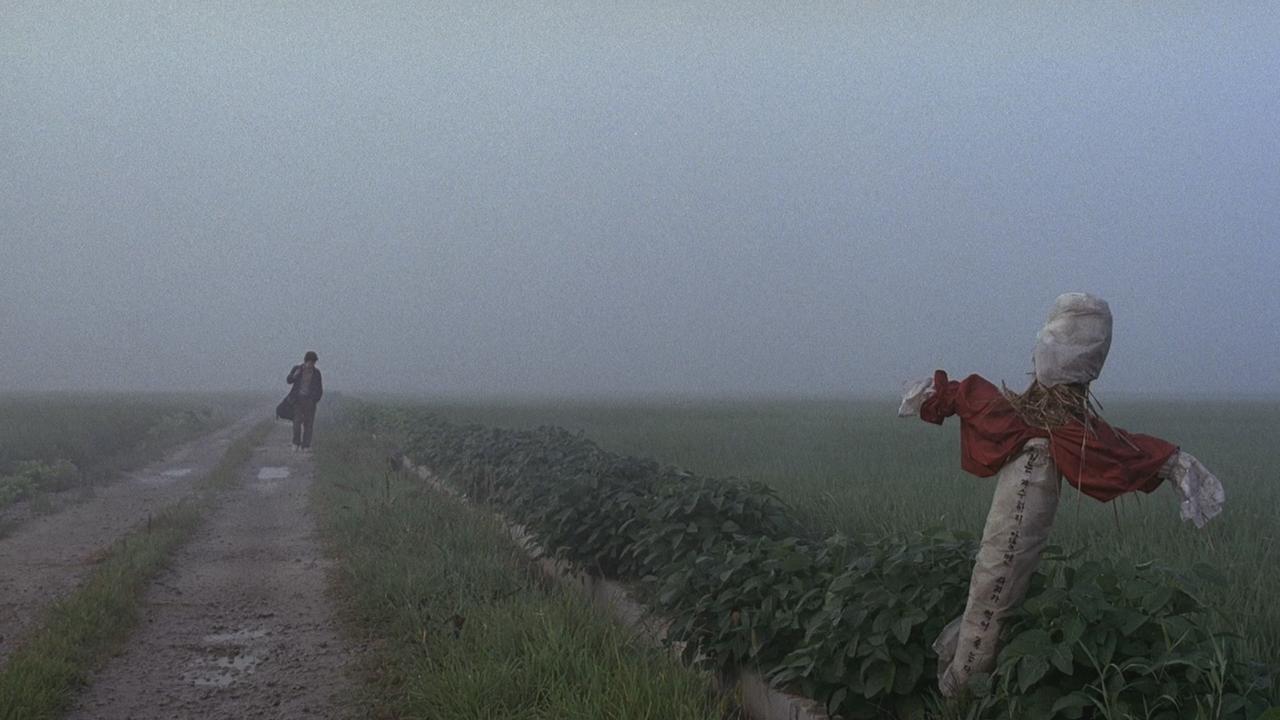
Bong Joon-ho’s “Memories of Murder” is one of those rare films where great quality combines with commercial success. In that fashion, by the end of its domestic run, more than 5 million people have watched it, making it the most watched movie for 2003 in South Korea, and the fourth most watched of all time.
“Memories of Murder” received screenings at several international film festivals, winning a number of awards while domestically, at the Grand Bell Awards, it won for Best Actor (Song Kang-ho), Best Director, and Best Film. Director Quentin Tarantino named it, along with Bong’s “The Host”, as one of his top 20 favorite movies since 1992.
Here are 6 reasons why it’s incredible. Please note that the article contains many spoilers.
1. Great presentation of an actual story

Based on the true, unsolved case of the first serial killer ever to appear in South Korea, the film begins in October 1986, when the deceased body of a raped woman is discovered in a ditch next to a field. A little later, another similar body is discovered.
Two local detectives, Park Doo-man and Cho Yong-koo, are responsible for the investigation, but are obviously out of their depth, since it is the first time incidents of that magnitude have occurred in the area. The rest of the local police department is also equally incompetent, since the officers that arrive at the crime scene cannot even prevent citizens from stepping into the crime scene until the arrival of the coroner, a fact that ruins any possible evidence.
Detective Tae Yoon arrives from Seoul to assist them and subsequently proceeds to eliminate the accusations for two individuals whom the local police officers forced to confess, with a mentally handicapped local named Baek Kwang-ho being among them. Furthermore, he discovers a clue that no one has noticed up to that point. Their combined investigation remains fruitless for a long time, while the local society grows restless due to the local detectives’ tactics.
Bong stayed quite close to the facts, even retaining some of the actual details of the murders. For example, both in the film and the case, the killer gagged the women with their underwear and the investigators found bodily fluids suspected to belong to the murderer in the crime scenes, but did not have access to equipment to determine whether the DNA matched with the suspects until late in the investigations.
The fact that he did not indulge in presenting a perpetrator in the film is one of the highlights of this tendency. Additionally, the fictional elements he added are all wonderfully implemented, as they make the story more compelling, adding to the entertainment level.
2. Meaningful direction with a splash of humor

Bong Joon-ho directed sublimely, mostly focusing on portraying the facts as accurately as possible. Equally excellent is the depiction of the antithesis between the local simpletons and the “intellectual” from Seoul, which is presented with intense humor, but without depriving the film of its seriousness. Additionally, the rendering of this particularly troublesome era in Korean history is also utterly competent.
Through these aspects, Bong makes a comment about the concept of forgiveness, and the ability of people to let go. The fact that Tae Yoon does not seem able to forget the case is what destroys him in the end, as is eloquently depicted in one of the final scenes, years after the incident.
Another level Bong explores through the film is the transformation of South Korean society from a military dictatorship to a liberal democracy, and subsequently to a consumer society. This transition is presented in a rather original manner, as serial killings are actually crimes without any purpose or meaning apart from the enjoyment of violence and murder. They are an archetypical example of modern society, since violence in the traditional societies was usually a means to an end.
As high technology (from Japan, in another direct comment) enters South Korean society along with democratization, the danger to the citizens shifts from the secret police and the various agents of the regime to the unknown neighbor, who does not stand out due to a uniform, but instead is perfectly blended in with his environment.
3. Great Cast

Song Kang-ho as Park Doo-man proves once more why he is considered one of the top actors in the country, with his talent of being entertaining while cursing or hitting people becoming largely evident here. His biggest achievement lies with the fact that he manages to create a truly despicable character seem likeable, since he is a rude, violent simpleton.
Kim Sang-kyung is also great as Seo Tae-yoon, with his biggest achievement being the metamorphosis from an individual who is “smooth” and detached from the tactics of his colleagues, to someone much worse, due to his growing despair for his continuous failure. The scene outside the tunnel is the one where this fact becomes more evident.
Of equal competence is the performances of the secondary characters, particularly of Park No-shik as Baek Kwang-ho, who even acquired his own fan club after this film, of Kim Roe-ha as Cho Yong-koo, with his spectacular dropkicks, and of Park Hae-il, in a role I will not reveal.
4. Cinematography as part of the narration

The cinematography by Kim Hyung-ku is spectacular, presenting images of rare beauty from the everyday life in the rural Korea of the 80s. The film holds the record for the most shooting locations in the country, in an effort to portray the circumstances of the era as realistically as possible.
Furthermore, Kim creates images rich with calculated lighting and filled with intense detail to set the mood in the various locations in the film, a trait that begins with the introductory scene and ends with the finale. From the field in the initial scene, to the interrogation room, the woods, the tunnel, and the night scene where the two detectives spy on a potential killer, everything is shot to perfection, as the cinematography actually is part of the narrative.
5. Impressive editing

Kim Sun-min has also done a great job in the editing department, with the film thriving with well-placed cuts, which retain the atmosphere and the quick pace of the movie.
One of the highlights of his efforts comes in one of the earliest scenes of the film, when Det. Park is interrogating suspects. The intercut shots of him interviewing them are combined with a theme much reminisced of the 80’s Hollywood action movies, which plays over the intercuts. This scene exemplifies both the well-constructed montage and Kim’s ability to retain the fast tempo.
Since the film also retains a sense of humor (though it’s one that’s somewhat twisted), the editing also plays its role in this aspect. This trait becomes evident in a match cut when the policemen sit around a coroner’s table, looking at a body. The scene then cuts to a Korean barbecue restaurant, where a piece of meat is being grilled.
6. Sharp comments about the Korean authorities at the time

Bong Joon-ho pulled no punches in portraying the authorities of the era in the worst colors possible. His critique starts in the beginning of the film, with the two local detectives producing laughter with their incompetence, instead of actually investigating the case properly. The scene where they try to keep the curious bystanders out of the field is a distinct sample of their lack of experience and detective skills.
This continues as the research progresses, with the two of them initially getting a confession through torture, and later, as they try to put the blame on Baek Kwang-ho, who does not seem to understand what is going on. The fact that their actions eventually enrage the local population is more proof of how despicable their tactics are. Lastly, the lack of knowledge and equipment for a proper criminal investigation is another element that highlights the incompetence of the police.
Bong’s critique, though, does not stop there, since the leadership of the police also falls under it. The scene where the chief of the precinct asks for backups from the prefecture, a night that the killer is supposed to strike again, but receives a negative answer, is another sample of his view of the authorities. The fact that the chief cannot come up with a solution of his own, and the fact that the higher-ups decline their help, definitely moves towards this direction.
Tae Yoon, despite his evident intelligence, also does not escape from this tactic. At first, he is depicted as an arrogant man who considers everyone in the place below him, in a distinct sample of how city policemen perceive their rural colleagues, but in the end he becomes something even worse than them.
Author Bio: Panos Kotzathanasis is a film critic who focuses on the cinema of East Asia. He enjoys films from all genres, although he is a big fan of exploitation. You can follow him on Facebook or Twitter.